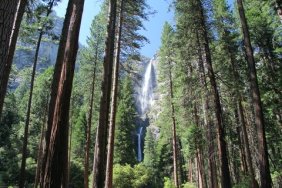 As Spring steadily arrives, one warm degree at a time, anglers are already hitting their local waters. You may not fill your livewell this early in the year, but a bad day on the water still beats an idle afternoon stuck in the house—especially during late March and early April. Today we’ll take a look at some tips for achieving success early in the season.
As Spring steadily arrives, one warm degree at a time, anglers are already hitting their local waters. You may not fill your livewell this early in the year, but a bad day on the water still beats an idle afternoon stuck in the house—especially during late March and early April. Today we’ll take a look at some tips for achieving success early in the season.
It’s well-known among the angling community that fish tend to be driven by their cold-blooded metabolism that’s regulated by the water temperature. This simply means that when the water is cold, a fish’s metabolism slows so that it requires less fuel to survive. Contrarily, when things start to heat up, so does the fish’s appetite, and when that warming of the water precedes the spawning season, it compounds the fish’s need to consume in order to survive with its need to mate. Capitalizing on this simple biological truth will yield you results where others might fail.
The heat provided by the Spring sun will spread warmth across the water and the surrounding landscape as the temperatures climb. This will have a profound effect on the lake’s geology, in terms of structure and cover. For instance, a shallow, dark-gravel flat that may be without fish early in the morning will warm up over the course of a few hours with ample sunlight. This tends to attract baitfish or aquatic insects looking find a temperature comfortable enough to warm them up after the winter, drawing them out into the open. Any predators—bass, pike, or walleye, for example—nearby will react the same way. Typically slow-moving during the morning, these fish may be on the prowl by the afternoon, eager to eat baitfish.
Also, lake bottoms consisting of deep, brown mud or dark-colored gravel absorb more sunlight than lightly-colored material, which can actually reflect the sun. This is why wood structure is more appealing to fish than light-colored cement or limestone. Wood absorbs more of the sun’s heat than lighter-colored materials and it releases that warmth to the adjacent waters. The same goes for shallow tributary streams that are exposed to the sun as they meander toward the larger lakes. The waters in shallow creeks and streams absorb some heat and offer an influx of warmer water where their flow enters the lake.
Seeking areas that retain the sun’s heat over the course of the day will start your day on the right foot. Furthermore, throwing baitfish imitators with slower presentations is how you’ll want to tackle these places.
By taking a closer look at how fish behave during the cool, early Spring months, you’ll get a better picture of what you need to do in order to bring them to the boat. Hopefully the tips listed above will help you out. Be sure to stop by for Part Two, where we’ll look at more tips for early Spring success on the water.








